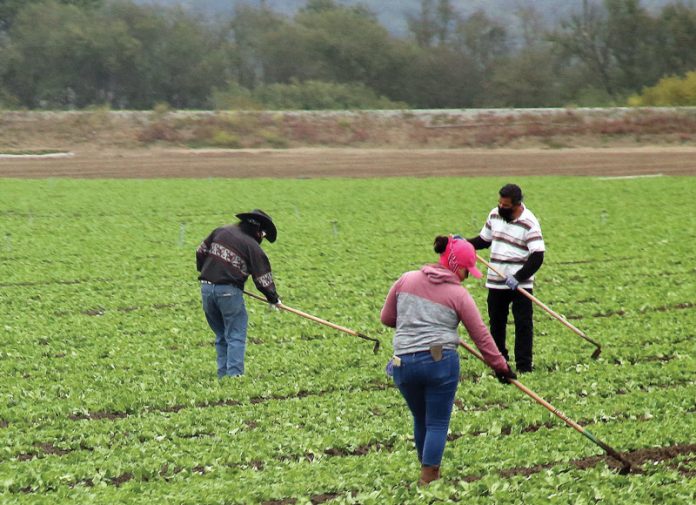
CENTRAL COAST—Pandemic-related losses to California farms, ranches and agricultural businesses will range between $5.9 billion and $8.6 billion this year, according to an economic study released June 23.
The analysis says the state’s $50 billion agricultural sector has already suffered $2 billion in losses so far, from disrupted markets and rising production costs related to the Covid-19 outbreak.
Financial impacts of the pandemic vary widely in the agricultural economy, the study says, depending in part on how much a particular crop or commodity relies on sales to food service and how much it has been affected by shifts in retail demand and changes in costs of production and processing.
The pandemic was an “abrupt disruption” to the agricultural supply chain in the state and around the world, the study says. When the food-service industry temporarily shuttered because of California’s stay-at-home order, farmers were left with hundreds of pounds of unclaimed crops (mostly fruits and vegetables, according to the report) they were forced to throw out.
The closure of schools and office buildings was another blow for farmers, especially those in the dairy industry that sell bulk orders of milk and other products to school districts. That industry saw the largest dollar-loss impact: $1.4-2.3 billion. Grapes ($1.5-1.7 billion) and flowers and nurseries ($660-740 million) were second and third, respectively, in dollar-loss impact, according to the study.
“Milk producers are dealing with oversupply as both demand from food service businesses and exports have fallen,” the study says. “Some producers have reported throttling back production by adjusting feed rations, though agencies have yet to report any major changes in quantities of milk coming off the farm.”
With the schools throughout the Central Coast starting the 2020-21 school year online, Santa Cruz County Agricultural Commissioner Juan Hidalgo said the country’s so-called “salad bowl” will have to work quickly to adjust to the new wholesale landscape, lowering demand and hygiene rules.
“That’s definitely going to have an impact,” Hidalgo said. “Even if kids are allowed to go back to school I think the schools are going to be in a place where they have to change how they provide meals to kids. Having an open cafeteria, an open salad bar, per say, I don’t think it’s something that schools are going to be doing because of this situation. I think from that standpoint, it will have an impact on our growers as well.”
At the same time, the wide-spread panic shopping at local markets proved to be a boon for shelf-stable items such as rice, processed tomato products and canned fruit. But in aggregate, the study says, “the losses far outweigh the isolated benefits.”
Produced by Davis-based ERA Economics, the study was commissioned by a coalition led by the California Farm Bureau Federation and including UnitedAg, Ag Association Management Services Inc., the California Fresh Fruit Association, California Strawberry Commission, California Tomato Growers Association and Western Plant Health Association.
CFBF President Jamie Johansson said the study illustrates the scope of the pandemic’s impact.
“California farmers, ranchers and their employees have continued the essential work needed to keep American families fed, but that work has come with sacrifice,” Johansson said. “The impact is being felt in rural communities throughout the state that rely on agriculture for their residents’ livelihoods. We want legislators and regulators to bear that in mind and avoid making farming even more costly and difficult in California.”
Analysts looked specifically at 15 different agricultural sectors, using data on production, exports and prices through early May, plus interviews and surveys of people and businesses.
In addition, the report says farms, ranches and related businesses have incurred higher operating costs for measures intended to increase employee health and safety, and in the logistics required to move crops and commodities to market.
“Along with the loss of key markets due to food service disappearing overnight or flower shops and garden centers not being allowed to operate in certain areas, we now are adapting to significant increased operational costs that many California farmers will never recoup,” said Chris Zanobini, president/CEO of Ag Association Management Services.
Abrupt shifts in purchasing patterns in export and domestic markets—prompted by the constriction in restaurant and other food-service sales and a swing to retail purchases for at-home use—have affected farmers, ranchers and agricultural businesses at various points in the supply chain, the study says, ultimately resulting in farm-gate crop price impacts.
The full report, titled Economic Impacts of the COVID-19 Pandemic on California Agriculture, may be found at www.cfbf.com/covid-19-study.












